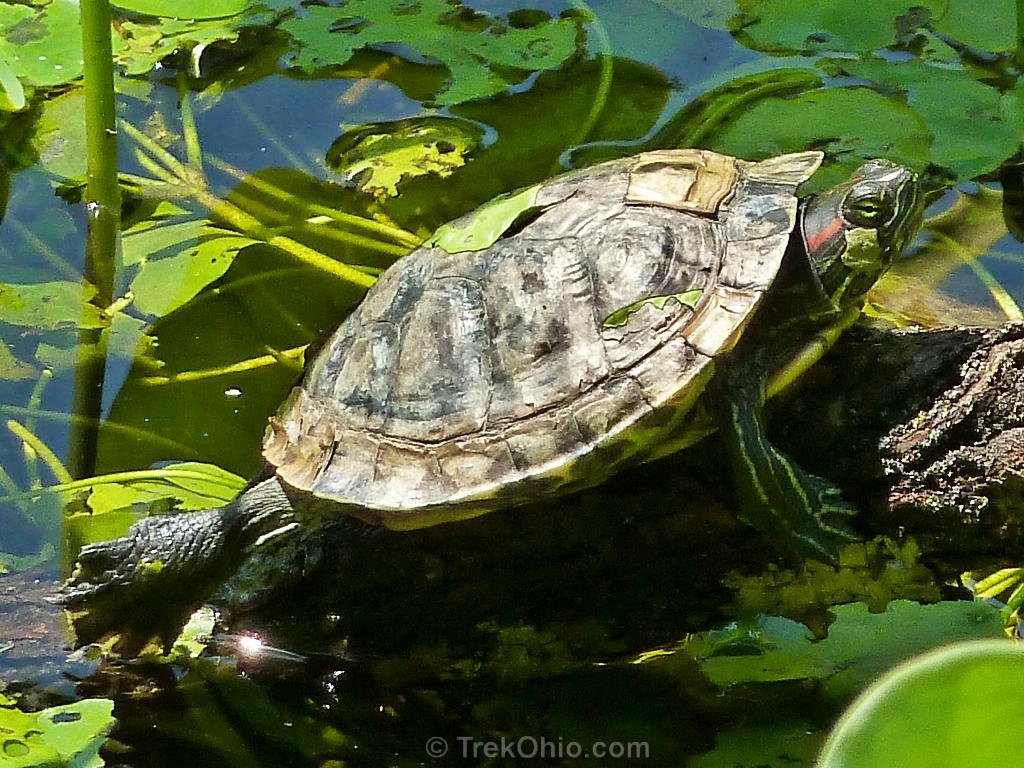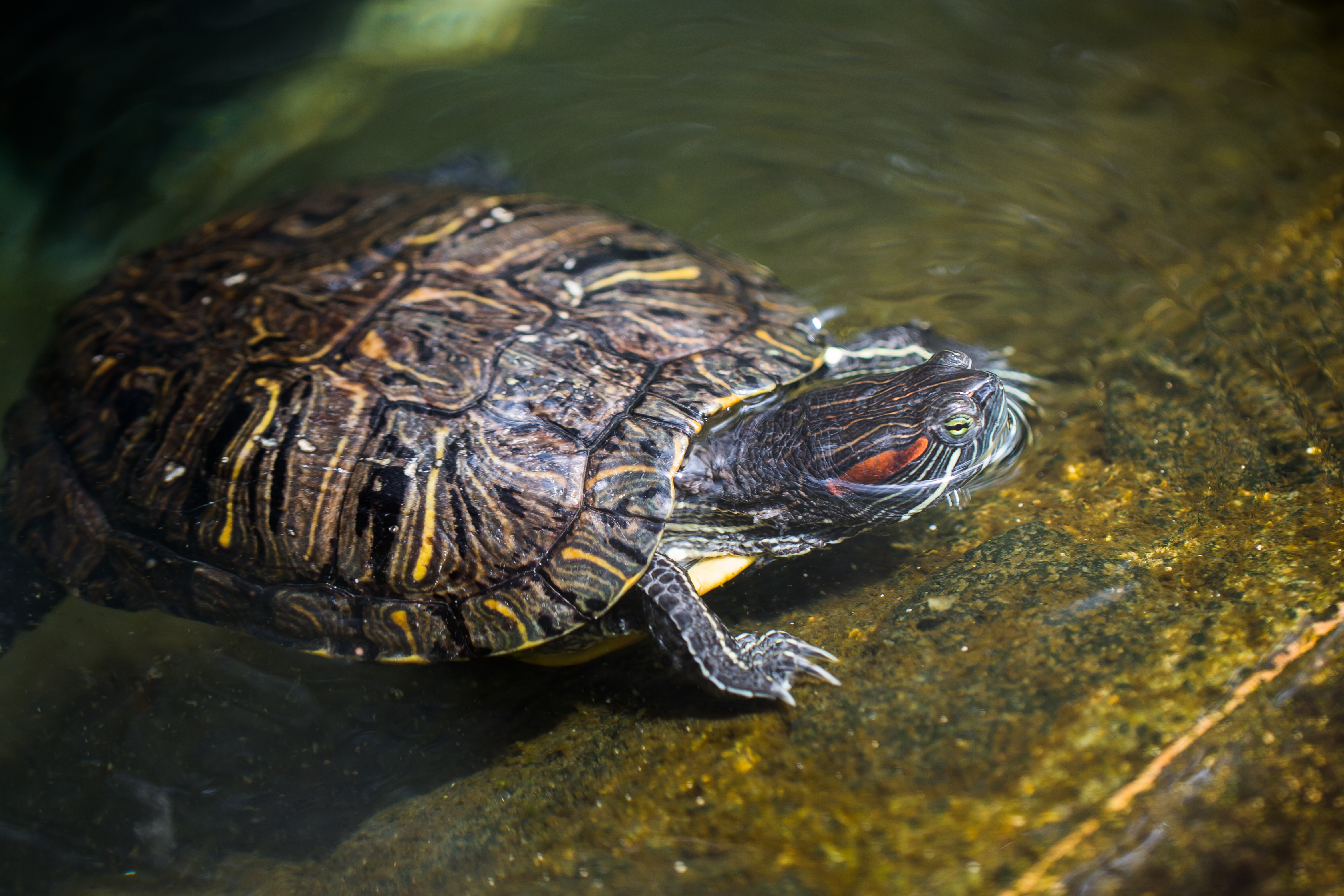Why Is My Red Eared Slider Turtle Shedding?
Red-eared slider turtles are a popular pet choice, and it can be concerning to see your turtle shedding its skin. Shedding is a normal part of a turtle’s life cycle, but it’s important to understand why it’s happening and how to properly care for your pet during this time. In this article, we’ll look at why your red-eared slider turtle is shedding and how you can provide the best possible care.
Red-eared slider turtles can shed their skin as part of their normal shedding cycle. This usually happens during the spring and fall months when the turtle is growing and exchanging old skin for new. The shedding process can take anywhere from a few days to a few weeks. It is important to ensure that your turtle has a clean and warm environment during the shedding process.

Why Is My Red Eared Slider Turtle Shedding?
A red eared slider turtle is a species of semi-aquatic turtle commonly found in the United States. They are popular as pets due to their relatively low cost, ease of care, and attractive appearance. As with any other pet, it is important to be aware of the health of your turtle and to be able to recognize any signs of illness or injury. One such sign of a potential health problem is shedding, which is when a turtle begins to shed its skin.
What Causes Shedding in Red Eared Slider Turtles?
Shedding in red eared slider turtles is usually caused by a few different factors. The most common cause is a lack of humidity in the turtle’s environment. Red eared slider turtles are native to areas with high humidity, such as the southern United States, and need this level of humidity to stay healthy. If the humidity levels in the turtle’s environment are too low, the turtle will begin to shed its skin.
Another common cause of shedding in turtles is a nutritional deficiency. If a turtle is not receiving the correct balance of vitamins, minerals, and other nutrients, it can lead to a shedding problem. A turtle’s diet should include a variety of foods, including commercial turtle pellets, vegetables, fruits, and insects. It is important to provide a balanced diet to ensure that your turtle is getting all the nutrients it needs to stay healthy.
What Should I Do If My Red Eared Slider Turtle Is Shedding?
If your red eared slider turtle is shedding, the first step is to attempt to identify the cause. If you suspect the problem is caused by a lack of humidity, try increasing the humidity levels in the turtle’s environment. This can be done by using a humidifier or by misting the turtle’s enclosure with water multiple times a day. If you suspect that the shedding is caused by a nutritional deficiency, take your turtle to a veterinarian and get an assessment of its diet.
Treating Shedding in Red Eared Slider Turtles
Once the cause of the shedding has been identified, the next step is to treat the problem. If the shedding is caused by a lack of humidity, increasing the humidity levels in the turtle’s environment should help. If the shedding is caused by a nutritional deficiency, it can be treated by adjusting the turtle’s diet. Providing a balanced diet with a variety of foods should help to ensure that the turtle is getting the nutrients it needs to stay healthy.
Cleaning and Disinfecting the Turtle’s Enclosure
It is important to keep the turtle’s enclosure clean and free of any debris or dirt that could cause health problems. The enclosure should be cleaned at least once a week and any debris should be removed. The enclosure should also be disinfected regularly with a turtle-safe disinfectant to kill any bacteria or parasites that may be present.
Signs of a Healthy Red Eared Slider Turtle
When a red eared slider turtle is healthy, it should have bright eyes, a strong shell, and a healthy appetite. The turtle should also be active and alert, and it should be shedding normally. If you notice any changes in the turtle’s behavior or appearance, such as an increase in shedding or a decrease in appetite, it is important to take it to a veterinarian for a check-up.
Preventing Shedding in Red Eared Slider Turtles
The best way to prevent shedding in red eared slider turtles is to provide them with the correct environment and diet. The turtle’s enclosure should be kept at the correct humidity levels and should be kept clean and free of debris. The turtle’s diet should include a variety of foods, including commercially made turtle pellets, vegetables, fruits, and insects.
When to See a Veterinarian
If you notice that your turtle is shedding excessively or is showing any signs of illness or injury, it is important to take it to a veterinarian as soon as possible. A veterinarian can assess the turtle’s health and determine the best course of treatment. They can also provide advice on how to prevent shedding in the future.
Conclusion
Shedding in red eared slider turtles is usually caused by a lack of humidity or a nutritional deficiency. If your turtle is shedding, it is important to identify the cause and then treat it accordingly. To prevent shedding in the future, it is important to provide the turtle with the correct environment and diet. If you notice any signs of illness or injury, it is important to take the turtle to a veterinarian for a check-up.
Related Faq
What Causes My Red Eared Slider Turtle to Shed?
Answer: Red Eared Slider turtles will shed their skin as they grow. This process is generally referred to as ‘ecdysis’, and is completely natural. The shedding process is typically caused by the turtle’s natural growth. As the turtle’s body gets bigger, the old, dry skin will eventually become too tight and need to be shed.
In some cases, the turtle may shed more than usual. This can be caused by environmental factors, such as living in a tank that is too small, or is kept at temperatures that are either too high or too low. If the turtle is not getting the correct nutrition, it can also cause more frequent shedding.
How Do I Know If My Red Eared Slider Turtle is Shedding?
Answer: You will usually be able to tell if your turtle is shedding by observing it closely. When a turtle is about to shed, its skin will look dull, dry, and may appear flaky. Additionally, the turtle may become less active and may hide more often. You may also notice that the turtle’s eyes are cloudy and its skin appears to be a lighter color than normal.
When shedding begins, the turtle will rub against rocks or other surfaces in its enclosure, which will help to loosen the old skin. You may also see small pieces of skin coming off the turtle’s body. Once the shedding process is complete, the turtle’s skin should look brighter and more vibrant.
How Long Does It Take for My Red Eared Slider Turtle to Shed?
Answer: The amount of time it takes for a Red Eared Slider turtle to shed can vary depending on the size of the turtle and the environmental conditions. Generally, it takes about 3 days for the process to be completed. During this time, the turtle may become less active and may hide more often.
Once the shedding process is complete, the new skin should look brighter and more vibrant. If you notice that the turtle’s skin is still dull, dry, and flaky after 3 days, it may be a sign that something else is wrong and you should consult your veterinarian.
Do I Need to Help My Red Eared Slider Turtle Shed?
Answer: In most cases, it is not necessary to help your turtle with the shedding process. The turtle will naturally rub against rocks or other surfaces in its tank to help loosen the old skin. It is important to make sure that the tank has plenty of places for the turtle to hide and to provide the correct temperature and humidity levels.
If you do choose to help your turtle with the shedding process, make sure to use a soft brush or cloth and only use very gentle strokes. Do not use any soaps or detergents, as these can be harmful to the turtle’s skin. It is also important to be gentle and not to pull or tug on the turtle’s skin as this can cause injury.
What Should I Do with the Shed Skin From My Red Eared Slider Turtle?
Answer: The shed skin from your Red Eared Slider Turtle is completely natural and should not be a cause for concern. In most cases, it is best to just leave the skin in the tank. However, if the shed skin is causing the tank to become too dirty, you can remove it from the enclosure.
It is important to remember that the shed skin still contains the turtle’s natural oils, so it should not be put down the drain. Instead, it should be disposed of properly, such as in the trash. If the tank is kept clean, the shed skin will not cause any harm and can be left in the tank.

Help! Your Turtle’s SHELL Is Peeling!! | What It Means!
The shedding process of a Red Eared Slider Turtle is a natural part of their growth and development. It is important to keep a close eye on their shedding process to ensure they are staying healthy and are not suffering from any medical conditions. Shedding can be a sign of your turtle’s health and wellbeing, so it is essential to keep an eye out for any abnormalities, such as excessive shedding or patches of missing skin. With the right care and attention, you can help your Red Eared Slider Turtle shed properly and stay healthy.

